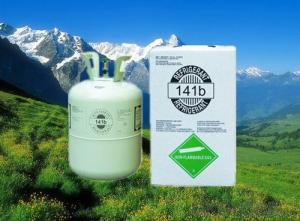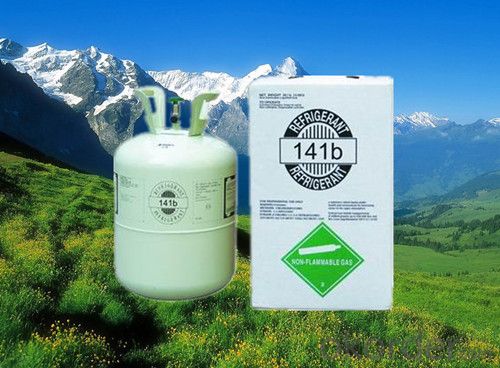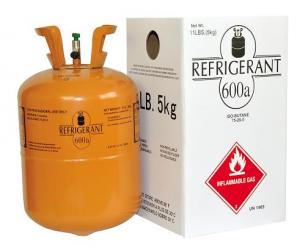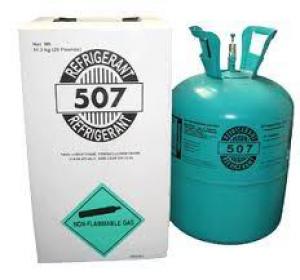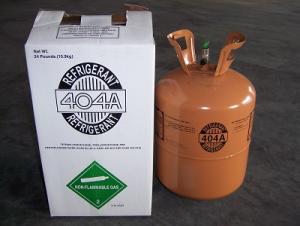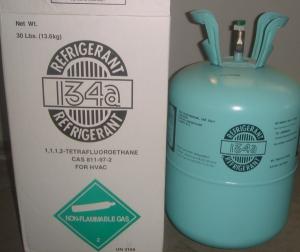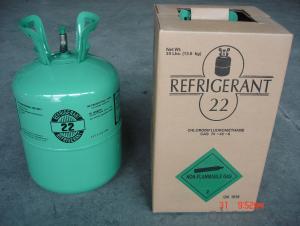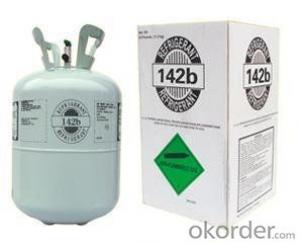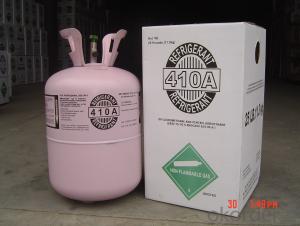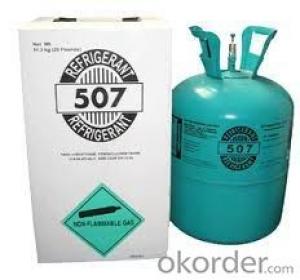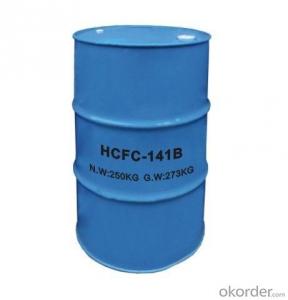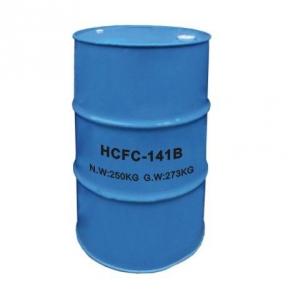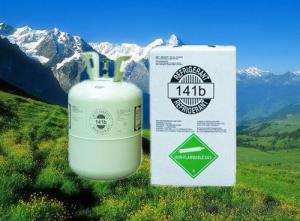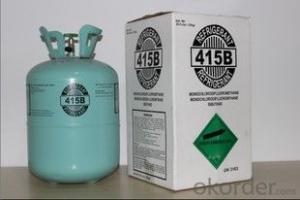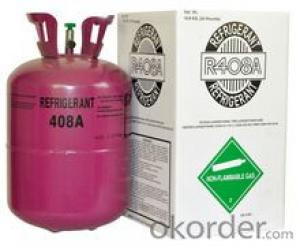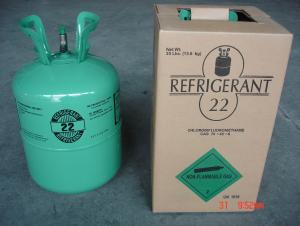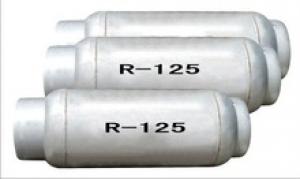R141b for Cleaning
- Loading Port:
- Shanghai
- Payment Terms:
- TT OR LC
- Min Order Qty:
- -
- Supply Capability:
- 1000MT m.t./month
OKorder Service Pledge
OKorder Financial Service
You Might Also Like
1.Properties and Applications:
is a colorless and transparent liquid at room temperature.It has low ODP value and excellent chemical stability.Since its physical and chemical properties are similar to those of CFC-11,CFC-113,it can substitute CFC-11 as foaming agent for rigid or soft PU foam ,or CFC-113 as metal cleaner and solder -remover as well.
It has following characteristics:
1).Chemical Stability: It is stable while stored at roon temperature and will not decompose.
2).It can dissolve in most organic solvents, alcohol and ether.It has excellent compatibiity with grease and lubricant ,and no abvious effects on most polymers including plastic an rubbers.
3).HCFC-141b is not irritate to human skin and eyes ,but inhale HCFC-141b of high concetration eill cause anesthesia.
4).HCFC-141b is flammble ,and should be stored in well-ventilated place without flame.
2.Physical and Chemical Properties:
Chemical formula:CH3CFCL2
Molecular weight :116.9
Boiling point,°c:32.05
Critical temperature,°c:204.15
Critical pressure,MPa:4.25
Melting point °c:-103.5
Vapor pressure,25°c:707 mm Hg
Vapor density,(air=1):4
Flammablity limit(air%):7.6-17.7
Solubility in water,25°c:2.6g/l
3.Quality Specification
Purity,%:99.8
Moisture,ppm:30
Acidityppm:0.1
Vapor Residue:100
Appearance:colorless, not turbid
Odor:Odorless
1) Odor: slight ethereal
2) Form: liquefied gas
3) Color: clear, colorless
4) Purity: min. 99.9%
5) Acidity (as HCL): max. 1.0ppm
6) Virulence(TLV): none
7) Advantages: high efficiency, safe, energy saving, environmentally friendly,
economical
- Q: What are the gaseous states of the oxygen-containing derivatives of the hydrocarbons under the standard conditions?
- Hydrocarbon derivatives of oxygen in the standard conditions are gaseous formaldehyde.
- Q: What is organic matter?
- Organic matter usually refers to carbon-containing compounds, or hydrocarbons and their derivatives are collectively referred to as organic compounds.
- Q: Chemical life network: chemical (inorganic reaction, organic reaction) is equal to the life of life reaction?
- Inorganic chemistry is the science of the composition, nature, structure and reaction of inorganic substances. It is the oldest branch of chemistry. All inorganic substances include all chemical elements and their compounds, except for most of the carbon compounds (except for carbon dioxide, Carbon monoxide, carbon disulfide, carbonates and other simple carbon compounds are still inorganic substances, the rest are organic matter.
- Q: Sugar, fat, and so on a variety of organic matter is full of different units of the heat of the small box. (Save the heat the most efficient, the least loss of heat the most practical and most economical box).
- The fundamental difference between organic matter and inorganic matter is whether it contains carbon elements (except carbon monoxide, carbon dioxide, carbonates, metal carbides and other simple carbon compounds). Is the carbon-based life (that is, we) the division of life material and non-life material academic concept. Regardless of whether or not to store heat. The ability of many inorganic materials to store heat is much higher than that of organic matter. From a broad cosmic perspective. Organic and inorganic division does not make sense, assuming that there is a silicon-based life (this possibility is very high). Then their organic and inorganic division should lie in whether it contains silicon.
- Q: Will AsH3 (arsenic trioxide) is organic or inorganic
- AsH3 (arsine trihydride) is not containing C element
- Q: What are the derivatives of hydrocarbons?
- In addition to the C and H elements, there are also one or more of O, X (halogen), N, S and other elements, such as methanol (CH3OH) learned from junior high school chemistry, (CH3Cl), nitrobenzene (C6H5NO2), and the like, which are mentioned in the previous chapter, are derivatives of hydrocarbons, such as ethanol (C2H5OH), acetic acid (CH3COOH)
- Q: Artemisinin is not a derivative of hydrocarbons
- A hydrocarbon is an organic compound (called a hydrocarbon) composed of two elements, carbon and hydrogen, and a hydrocarbon. Can be simply divided into open chain hydrocarbons, alicyclic hydrocarbons and aromatic hydrocarbons, all hydrocarbons are hydrophobic, that all the hydrocarbons are not soluble in water.
- Q: How to do it? Solve Inorganic Chemistry
- Inorganic chemistry is one of the earliest disciplines in the development of chemical science. It undertakes a major task of studying the composition, structure, properties and reactions of all elements and elements (except hydrocarbons and derivatives). The current development of inorganic chemistry has two distinct trends, that is, in the breadth of the broadening and depth of the advance. It is the three pillars of modern civilization
- Q: Is the system name of a hydrocarbon derivative named if the question can be named according to the nomenclature of the alkane?
- Halogen can be named after the alkane, the other can not
- Q: What is the current status of carbon dioxide capture technology and how is it compared to plants that absorb carbon dioxide?
- Landlord can check their own literature what. = For example, I think this review is very good. The Although it does not include relatively new progress, but I think it is quite good. The You see such an answer to the efficiency of how low ah not as good as their own to find the literature to see right
Send your message to us
R141b for Cleaning
- Loading Port:
- Shanghai
- Payment Terms:
- TT OR LC
- Min Order Qty:
- -
- Supply Capability:
- 1000MT m.t./month
OKorder Service Pledge
OKorder Financial Service
Similar products
Hot products
Hot Searches
Related keywords
